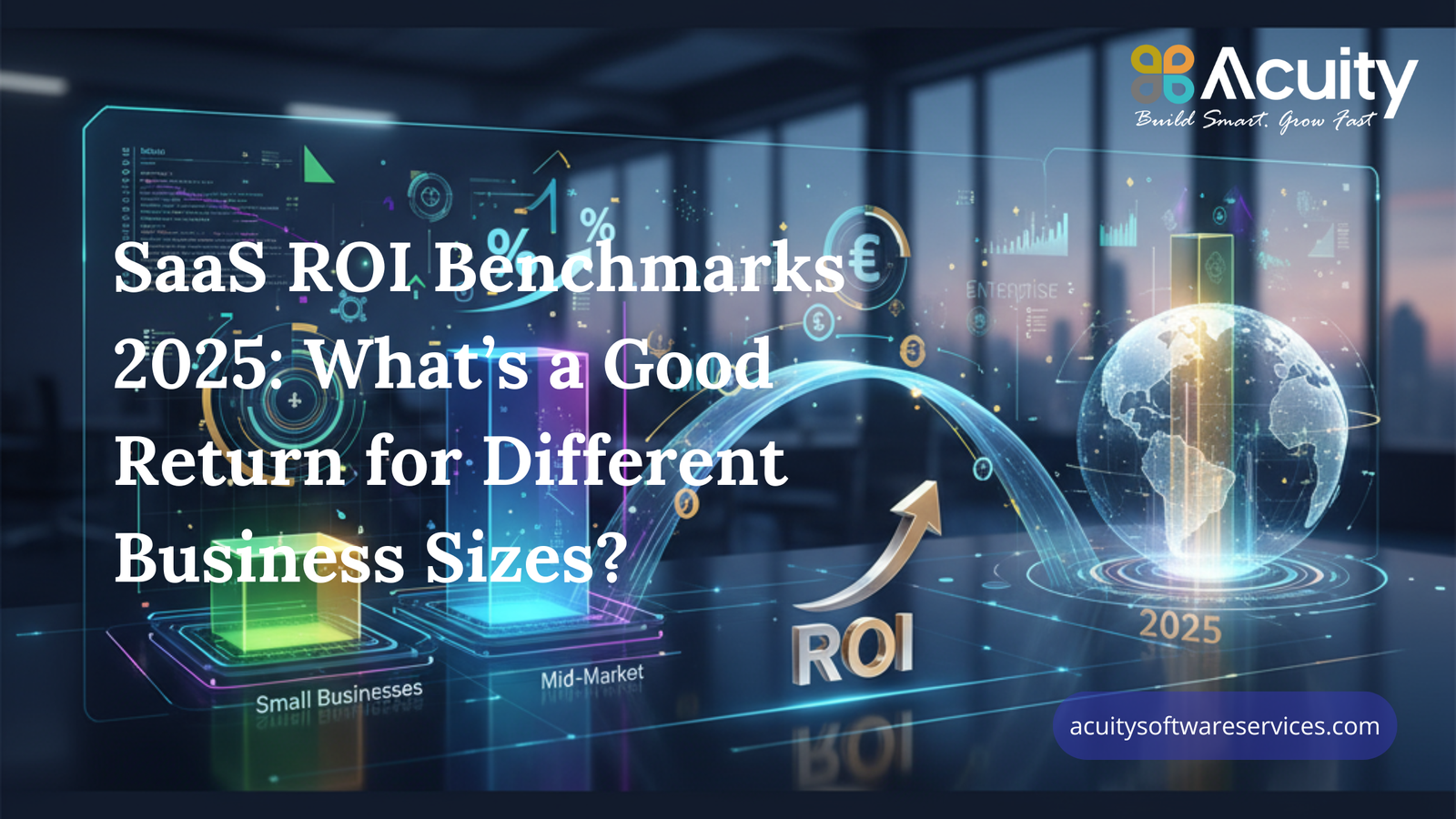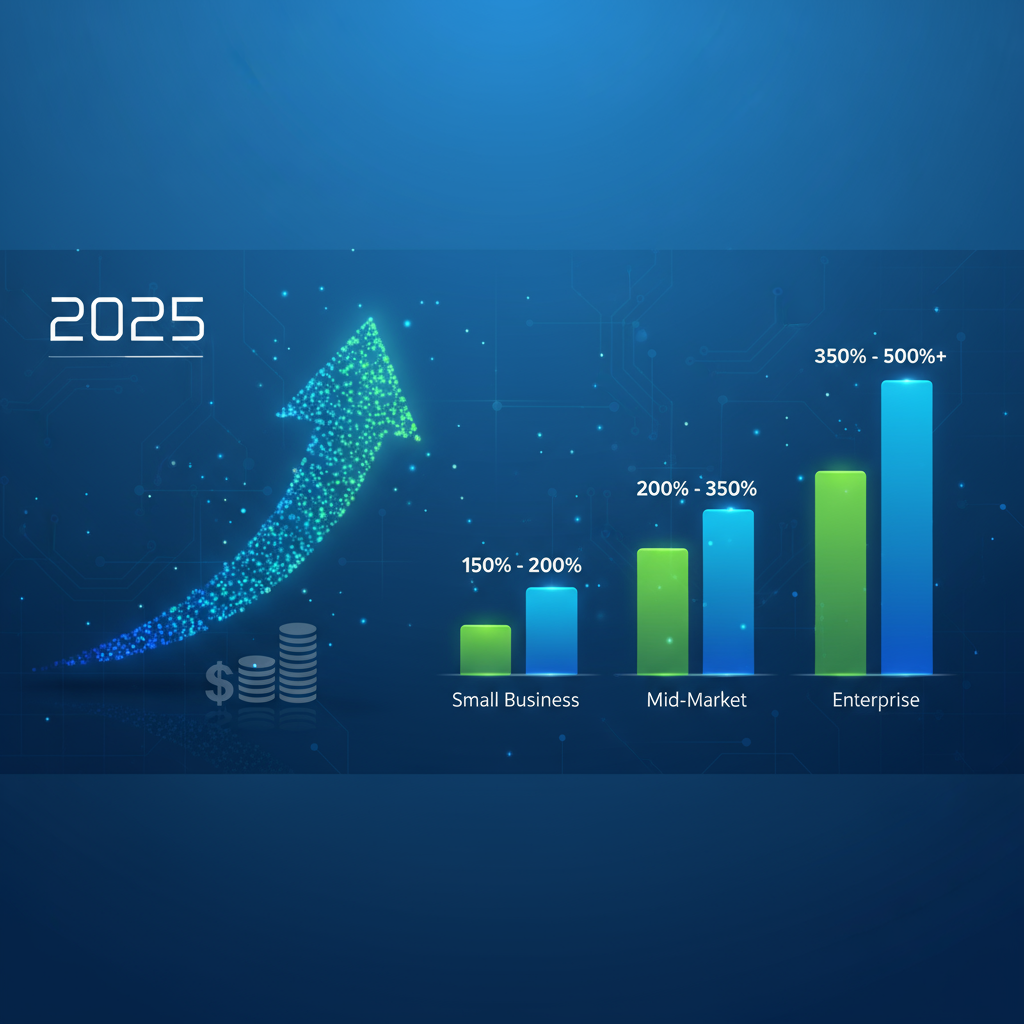How AI & Machine Learning Are Powering Smarter Cloud-Based Ordering Systems

In today’s digital-first world, Software-as-a-Service (SaaS) continues to be one of the fastest-growing sectors in technology. However, while companies are quick to adopt SaaS solutions, many struggle to measure their return on investment (ROI) effectively. Whether you’re a startup, a growing small business, or a large enterprise, understanding SaaS ROI benchmarks 2025 is essential for making smarter investment decisions.
In this comprehensive guide, Acuity Software breaks down what a good ROI looks like across business sizes, how to measure it, and what strategies you can use to maximize your SaaS returns in 2025 and beyond.
Before diving into numbers, it’s important to understand what SaaS ROI represents. At its core, SaaS ROI measures the value a business gets from a subscription-based software investment compared to the cost.
The formula is simple:
ROI (%) = (Net Gain from SaaS – Cost of SaaS) / Cost of SaaS × 100
This metric is crucial because it helps companies:
With more businesses shifting toward cloud solutions, ROI is becoming a key decision factor for IT leaders and CFOs alike.
ROI expectations vary significantly based on business size, budget, and goals. Here’s what typical SaaS ROI for small business vs enterprise looks like in 2025:
Small businesses usually prioritize quick payback and strong efficiency gains.
💡 Example: A small retail business using a SaaS CRM that costs $500/month might generate $2,000/month in additional revenue or savings — a 300% ROI.
Mid-sized businesses tend to focus on scalability and integration across teams.
💡 Example: A growing SaaS marketing platform may cost $2,000/month but deliver $6,000/month in increased lead conversions and revenue.
Enterprises look at long-term strategic value, scalability, and advanced automation.
💡 Example: An enterprise investing $100,000 annually in SaaS HR automation may save $400,000 annually in labor and productivity — a 400% ROI.
For SaaS startups, the ROI picture is slightly different. Early-stage companies are not just looking for immediate profit — they’re investing in growth and scalability.
Startups that track ROI carefully from day one are more likely to secure funding, scale efficiently, and achieve sustainable growth.
To get accurate ROI numbers, businesses should track these core metrics:
Using these KPIs, companies can calculate SaaS ROI benchmarks 2025 more precisely and align software decisions with business goals.

Whether you’re a small business or a large enterprise, these tactics will help you boost returns:
SaaS is no longer just a tech solution — it’s a growth engine. Understanding SaaS ROI benchmarks 2025 helps businesses make informed investment decisions, optimize their software usage, and achieve measurable results.
Whether you’re evaluating typical SaaS ROI for small business vs enterprise or analyzing the average ROI SaaS startup figures, the key is to track, measure, and improve consistently.
At Acuity Software, we help companies of all sizes maximize their SaaS potential — from strategy to implementation. Want to share your SaaS ROI experience or have questions about boosting returns? Leave a comment below — we’d love to hear from you!
Whether you are looking to engage us for your next project, looking for a job with us, or you just want to say hi, this is the place to do it. We'll never invoice you for any initial discussion of your project.

